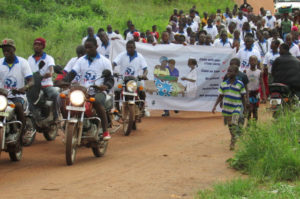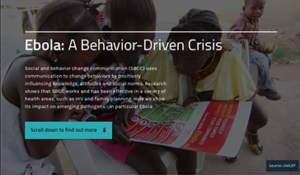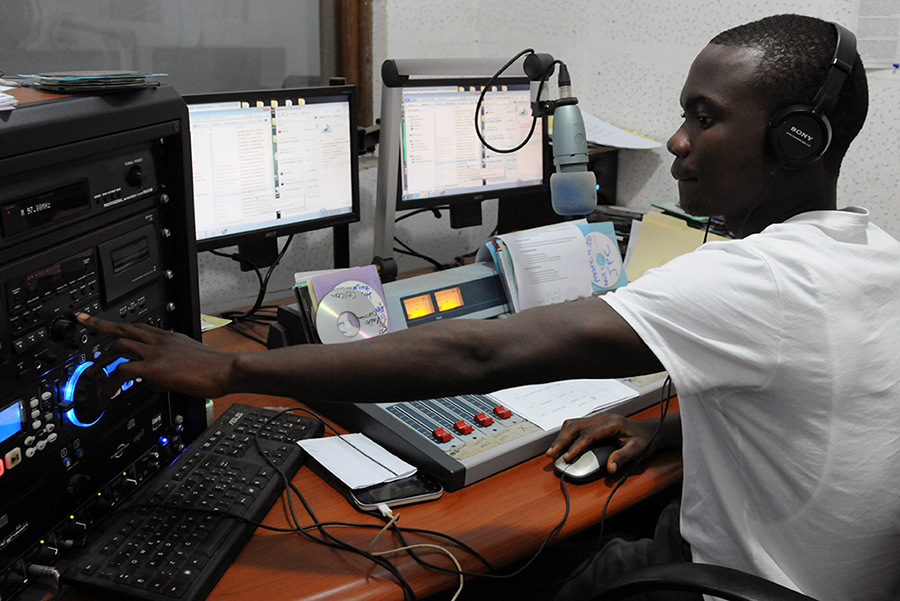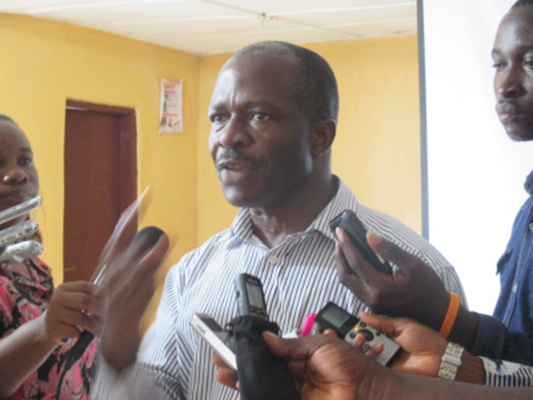HC3 responded quickly and effectively to assist the government of Liberia during the height of the Ebola outbreak. HC3 staff played a key role in ensuring effective coordination between various stakeholders within the government and among their partners, produced and disseminated SBCC tools and materials that enabled Liberians to understand their risk and inspired actions to mitigate it, supported a Rumor Tracking System that enabled near real time response and undertook research to provide an evidenced-based response.
In the aftermath of the crisis, HC3 supported the Ministry of Health to implement impactful social and behavior change communication (SBCC) programming with the goals of increasing demand for health services and promoting improved health practices at home, as part of efforts to rebuild the country’s health system.
Launch of the Healthy Life Brand
While the Healthy Life logo has existed since 2010, HC3 supported the Ministry of Health to breathe new life into it by re-launching and branding it as a symbol of trust, hope, happiness and well-being. The Healthy Life logo, used on all MOH materials represents partnership between community & health care providers, access to health information & services and building healthy families. The first campaign under the revitalized brand focused on compassion – compassion between providers and clients; between communities and facilities; and within households. The compassion campaign and brand were (re)launched on June 10, 2016. The second campaign, addressing Community Engagement ran from October to December 2016. Access the Health Life campaign materials.
To reach the crucial cadre of general Community Health Volunteers (gCHVs) with accurate information, skills building and continued motivation, HC3 produced a Radio Distance Learning program, Community Action for Health. It was broadcasted throughout the country on national and community radio stations. The 26-episode program included a drama component and voices from the field and accompanying support materials that reinforce the key learning and messages. It equipped gCHVs with the information they need to engage communities, promote healthy behaviors at the household level and increase demand for and utilization of health services. Feedback on the program was obtained through using mhero, an SMS based monitoring and dissemination system.
During the Ebola Crisis, HC3 Liberia adapted an experiential based community toolkit (Journey of Hope) to address Ebola related risk and action. Called the Bridges of Hope, it enabled community members to explore their fears and concerns and build their efficacy to face the disease. Building on this successful methodology, HC3 updated the toolkit to include other pressing topics such as malaria, FP and gender-based violence and rolled out trainings throughout the USAID focal counties (Bong, Lofa, Nimba, Grand Bassa, Margibi, Montserrado).
HC3 Liberia continued to play an important role in capacity strengthening of the government and other partners. To improve coordination and harmonization, HC3 provided input to MOH technical working groups developing harmonized messages on health communication and strengthening SBCC materials review and approval processes, and alignment of health promotion and community health activities. In addition, HC3 Liberia continued to provide technical assistance in the development and roll out of key documents such as the RMNCH Message Guide, National Health Promotion Policy and Community Health Workers Curriculum.
To improve sharing of SBCC resources and help improve the performance of SBCC and health promotion practitioners, HC3 conducted an assessment to identify knowledge management gaps and needs. Trainings were conducted, the MOH/HED’s web portal was revitalized and a resource center was established.
To strengthen use of research for evidence-based programming, HC3 Liberia supported the MOH in the analysis of the Knowledge, Attitudes and Practices study (KAP I) study, the design, implementation and analysis of the KAP II study, and mobile geo poll surveys and Listening Group sessions during the Ebola crisis to better understand how people were responding to the epidemic.
During the Ebola outbreak, HC3 partner Internews developed a Rumor Tracking system that captured real time rumors in the community and worked with journalists and other health communicators to address those rumors with factual information. Post epidemic, Internews continued the Information Save Lives component and worked with local media to set up county-based SMS trackers to capture how (mis)information is spreading about other key health issues and trained journalists to better address health information needs and strengthen systems for information feedback.





